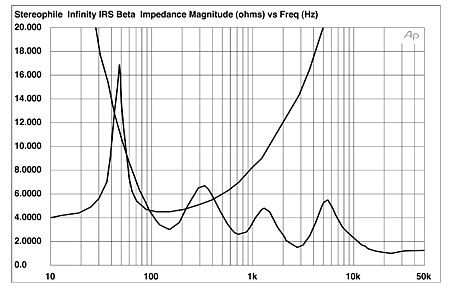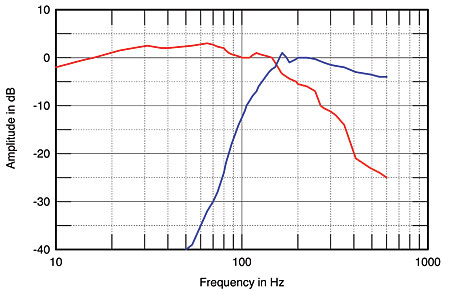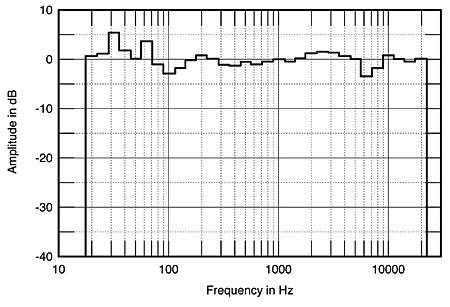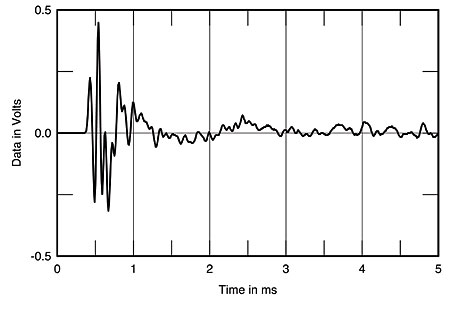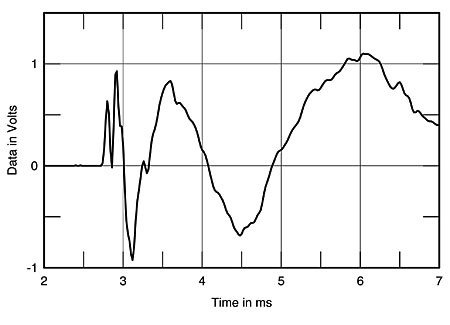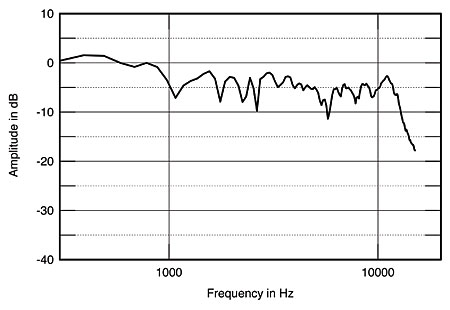

Infinity IRS Beta loudspeaker
J. Gordon Holt & Larry Archibald, October, 1988
![]()
In 1966, two avid audiophile/music lovers—a nuclear physicist named Arnold Nudell and an airline pilot named Cary Christie—labored over weekends and evenings for 18 months in Nudell's garage to put together the world's first hybrid electrostatic/dynamic loudspeaker system. It cost them $5000 for materials, launched a company (New Technology Enterprises), and helped contribute to the popular myth that all of the really important audiophile manufacturers got started in somebody's basement or garage (footnote 1). The system was marketed as the Servo-Statik I, for the princely sum of $1795. (At the time, the most expensive loudspeaker listed in Stereo Review's "Stereo/Hi-Fi Directory" was JBL's "Metregon," at $1230.)
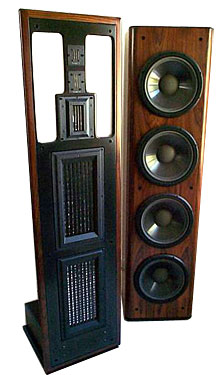 It was in 1968, though, when this fledgling enterprise went "legit," with funding from outside investors, the rental of industrial space for a factory, and adoption of the name Infinity Systems, Inc. (If you're good at mental arithmetic, you may have reason to surmise that 1988 is Infinity's 20th anniversary). The first review of the SS-1 appeared in our Winter, 1968 issue, and it was an unqualified rave. But we had to return the system to Infinity shortly thereafter. We did so grudgingly.
It was in 1968, though, when this fledgling enterprise went "legit," with funding from outside investors, the rental of industrial space for a factory, and adoption of the name Infinity Systems, Inc. (If you're good at mental arithmetic, you may have reason to surmise that 1988 is Infinity's 20th anniversary). The first review of the SS-1 appeared in our Winter, 1968 issue, and it was an unqualified rave. But we had to return the system to Infinity shortly thereafter. We did so grudgingly.
Despite the subsequent release of two "affordable" hybrids, the models 2000 ($239) and 1000 ($119), Infinity Systems remained conspicuously inconspicuous in the audio field until 1970, when they were "discovered" by High Fidelity magazine, which gave the SS-1 an intemperately enthusiastic review.
Five years later, we got a revised version to test. By then, the SS-I had become the SS-IA. It was a three-way system consisting of a single 18" servo-controlled woofer in a cubic enclosure, plus two separate screens combining six largish electrostatic midrange panels with about the same number of electrostatic tweeters ranged in a single horizontal row and aimed in half a dozen different directions to "average" their HF beaminess. The tweeters were designed and built by the Jantszen company, which had had many years to debug the design, but the Infinity-designed midrange panels were far from bug-free. They had a tendency to arc-over at high listening levels, and when this happened, the spark would burn a hole in the diaphragm and the sharp edges around this from then on became a source of weakness, causing arc-over at much lower volume. Admittedly, our sample SS-IA was a "pre-production prototype," but the number of midrange-panel failures we experienced during the course of our tests did not augur well for the system's viability as a commercial product. Nonetheless, I was immensely impressed by the SS-IA's sound when it worked, describing it (in my review, Vol.III No.9) as one of the two "most accurate" speaker systems available. (The other, reviewed in the same issue, was the FMI J-Modular.)
Infinity apparently never did solve the problem of midrange-panel breakdown. Instead, they bypassed the issue by abandoning the electrostatic approach entirely. In 1976, after using the Strathearn planar driver for a while, they introduced their EMIT, the name being an acronym for "Electro-Magnetic Induction Tweeter." Essentially a push-pull ribbon transducer with an etched voice-coil, EMIT was later supplemented by a midrange version, called EMIM, and both became the basis of all subsequent loudspeakers from Infinity, other than their beer-budget models, from car-stereo speakers to the huge $45,000 IRS V.
At a bit over $10,000/pair, the IRS Beta should by all rights be a poor cousin to the "flagship" IRS V. After all, higher price buys higher quality, right? Particularly when the same manufacturer makes both models. But put that question to the people at Infinity, and you get a lot of hemming and hawing and scrabbling of toes in the dust. No, they won't come right out and tell you the IRS V is better than the Beta. (See, I resisted the urge to make a Terrible Pun.) But neither will they tell you the Beta is beta than the IRS. (I couldn't resist!) But the implication is clear; the folks at Infinity are proud of what they've pulled off in the Beta. And not without justification.
The IRS Beta is a five-way design, with the usual cone woofers (eight 12" in all) and a vertical array of five EMI drivers on each of two separate upper-range panels. These drivers have acronymic appellations of LEMIM (large midrange), EMIM (midrange), EMIT (tweeter), and SEMIT (supertweeter). All the crossover filters for the EMI drivers are contained in the bases of the free-standing panels, as are the level controls for the three uppermost drivers. (The two LEMIMs are the only drivers without level controls, which is okay because all the others have them.) An electronic crossover (supplied) contains an active low-pass section, with response-contouring controls for the woofer towers, and a passive (straight-through) signal path for the upper-range panels. The Beta system must be bi-amplified, although it is unusual in that it feeds the full audio range to the upper-range amplifiers.
On the electronic crossover are a woofer level control, a crossover control—labeled "low-pass filter"—which changes the woofer low-pass turnover, a "high-pass filter" that establishes the system's LF cutoff frequency, a bass contour control (for rising, falling, or flat response below 40Hz), and a woofer polarity switch. On the rear of the crossover is a toggle switch labeled Open Loop Gain Comp, which is essentially a gain-compensating switch for the bass amplifier.
I mentioned earlier that Infinity's original hybrid systems had a "servo-controlled" woofer. A second voice-coil was connected via a second pair of speaker wires to what amounted to a feedback circuit in the electronic crossover, which compared the cone's actual motion with the input signal, and automatically corrected for any discrepancy. The Beta uses a much more sophisticated form of servo control. One of the four woofers in each column has a high-quality accelerometer attached to its cone which measures the cone's changes in motional velocity. A second pair of (lightweight) wires carries the accelerometer output back to the crossover unit, and the signal is compared with the input signal, the difference being applied out-of-phase to the signal to correct for the discrepancy. (The woofers are said to be closely enough matched that the behavior of one will be typical of all.)
Because the servo control involves a large amount of negative feedback, signal polarity is crucially important. The servo connecting plugs are polarized, and can only be connected one way, but if the bass amplifier is polarity-inverting, or if the woofer cables are reversed, plus for minus, the negative feedback becomes positive and the system will go into violent full-power oscillation at around 35Hz, which is (I can assure you!) one of the most frightening (and potentially destructive) sounds you will have ever heard! This can also happen if everything is phased properly but the bass amplifier has very high gain, which explains the "Open Loop Gain Comp" switch. So, regardless of how absolutely certain you may be that your bass amp is noninverting and has the right gain and the speaker cables are properly polarized, you should always set the crossover's Woofer Level control all the way down before turning everything on the first time, and raise the level slowly to ascertain that everything is okay. If it isn't, a rising roar will warn you to turn the control down again before the woofer cones turn inside out, and to reverse the polarity of the speaker cables. Test one woofer channel at a time so that, if you get oscillation, you'll know for certain which channel is bass ackwards.
Nota bene: The crossover's front-panel Polarity switch does not have the same effect as reversing the woofer connections. It reverses the woofer polarity independent of the feedback loop, so it does not change the negative feedback to positive feedback or vice versa. The Polarity switch is used only to achieve correct absolute system phase, in conjunction with the upper-range panel polarity, when (for example) the preamp/control unit is polarity-reversing. Infinity's instructions stress the importance of overall absolute phase, but I seem to be one of those people who are stone-deaf to absolute phase. My advice: Try to phase the system properly, just in case your ears are polarity-sensitive, but don't worry if you can't hear the difference. You're in good company.
Three Infinity staffers descended upon us prior to my tests of the Beta. First, chief design engineer John Miller arrived to modify our speakers—removing their overload protection circuitry—and to install and check them out. The protection mod on my Betas was done because the Infinity people felt they could trust us not to abuse them and because, apparently, the overload protection causes a slight degradation of the sound. (Considering Stereophile Santa Fe's record to date—six woofers and two tweeters trashed in a mere three years—I would say his confidence was misplaced.) But I had, and still have, some misgivings about reviewing a modified version of the Betas. If Infinity is not prepared to sell the unprotected version to consumers, I would have preferred to test a stock pair. As it is, I have no way of knowing how much the overload protection affects the sound, and, as a consequence, how much better my samples may have sounded than the average production speakers. (Perhaps Infinity can enlighten us about this, in a Manufacturer's Comment.)
After Mr. Miller left, Infinity president Arnie Nudell and senior veep Leon Kuby arrived, to re-tweak the loudspeakers and "make sure everything was working right." Having the manufacturer install his speakers for us is not exactly SOP at Stereophile, nor is it at all unusual. I usually undo most of what they've done after they leave, anyway, because my priorities for reproduced sound tend to be different from that of most manufacturers. But in this case, such undoing was minor.
Equipment used for these tests included the Ortofon MC-3000 cartridge in the Versa Dynamics arm and turntable, a Stax Quattro CD player, a Sony PCM-F1 digital tape system, Threshold's FET-10 preamp and line controller and SA-1 power amplifiers, an Audio Research SP11 preamp, and pairs of Audio Research M-300 and VTL 300 mono amplifiers. Audio interconnects were Monster M-1000s, speaker cables were Monsters and AudioQuest Clears. Program material was some of my own and others' original tapes, and CDs and analog discs from Sheffield, Opus 3, Telarc, and Reference Recordings.
Footnote 1: This is consistent with the equally popular myth that people will beat a path to the door of anyone who invents a better mousetrap. They will, but only if the inventor spends half a million dollars on advertising and promotion.—J. Gordon Holt
